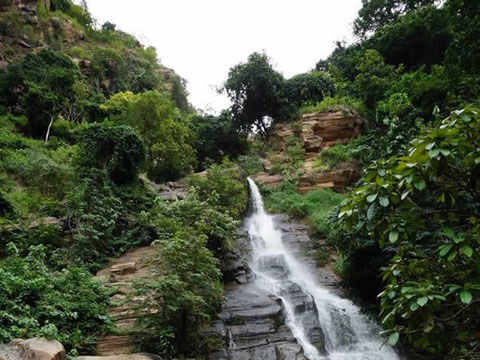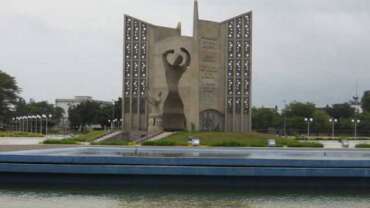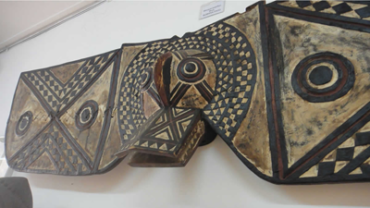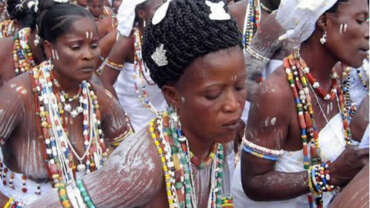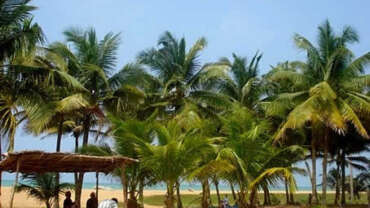Nature in Togo
The Togo , state party to the Convention on the Protection of the World Heritage Cultural and Natural , has the nature reserves or protected areas localized, each in a specific region, which straddles two adjacent regions togo-reserve-fauna-flora
Nine (9) nature reserves are declared priority in Togo and three (3) among them are proposed in 2004 to be inscribed on the UNESCO World Heritage List and have the necessary attractive criteria that can make a valid contribution to tourism .
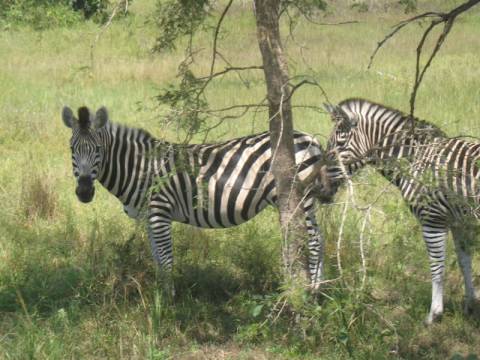
The Togo has many parks and nature reserves.
We can site among others:
– Fazao-Malfakassa National Park: Leaning against the chain of the Fazao-Malfakassa Mountains , sumptuously dressed in a mosaic of plant formations, the park is swarmed with beautiful forest galleries and fertile plains colonized by many plant species known for their sweet aroma, under which we can see wandering buffaloes , elephants , antelopes , hartebeest , cobs , warthogs , etc. Covering an area of 192,000 hectares , this park is a sanctuary for birds , primates , reptiles and other wildlife curiosities.
Managed by the Franz Weber Foundation , it opens for vision safari tours during the dry season , from November to April .
– The Aledjo wildlife reserve: The Alédjo Wildlife Reserve is located in the prefectures of Tchaoudjo and Assoli. Straddling the Central and Kara regions , the Alédjo zone is limited to the north by the village Kpéwa , to the south by the village Aléhéridè , to the east by the Kpéwa – Kadara trail and on the west side by the village Efolo and localities atypical.
Inscribed in a section of the Togo Mountains , the Alédjo Wildlife Reserve is a natural area of 765 ha which intervenes in the conservation of biological diversity , the protection of local geological and physiographic formations .
– Sarakawa wildlife reserve: This reserve was recently opened to the public. Some safaris discovery are organized to meet the African wildlife. You can see, among other things, zebras , cobs , hartebeest and many other animal species.
– The Oti reserve & the Kéran national park: The Oti reserve covers the valley of the Oti river over 1878.40 km². The Kéran National Park straddles the savannah region ( Oti prefecture ) and the Kara region ( Kéran prefecture). It covers approximately 1700 km². The main species visible in the Keran are: the Warthog , the Buffoon Cob , the Buffalo , the Grimm’s Cephalophe , the hyppotrogne , the hartebeest , the Fassa Cob .
– Mandouri reserve & Dung pit: Mandouri reserve: The reserve, located 97 km from Dapaong track, offers the opportunity to discover in a still quite informal way the fauna and flora of a parkcontiguous to the large national parks of Burkina Fasoand Benin. The Dung pit: sacred pit inhabited by spirits.
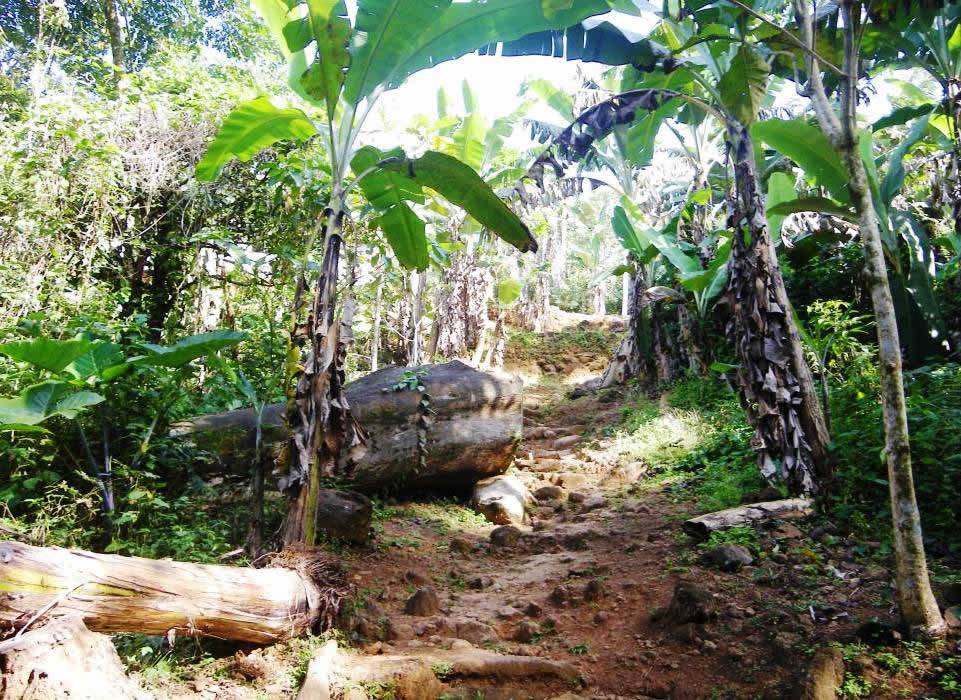
The Togo has a natural heritage remarkable.
The Mono valley , near the border with Benin , is swarmed with small hamlets nestled on the banks of the river among palm plantations, corn and cassava fields .
If you visit Badou , don’t miss seeing one of Togo’s wonders , a 100m cascade of milky water that rushes from a granite cliff into a pool deep in the forest.
Activities related to Natural Heritage:
Aklowa waterfall
Region: Plateaux
City: Badou
If you visit Badou , don’t miss seeing one of Togo’s wonders , a 100m cascade of milky water that rushes from a granite cliff into a pool deep in the forest.
You will need to take a 40-minute walk on narrow paths that wind over hills through cocoa plantations before entering the forest.
The journey is a bit tiring but well worth it. You will find yourself deep in the forest and you will have the impression of discovering the world when you arrive in the ravine withdrawn at the base of the fall.
The Kpelé Tsavié waterfall
Region: Plateaux
City: Kpalimé
Are you in Togo and want nature? Are you looking for a preserved, green, refreshing place? Look no further, we have what you need! La Cascade Verte welcomes you to Gbaledze .
After a pleasant hike of an hour, you will reach a first small pool. Cross it and discover a cool rest area, in the shade of the trees, ideal for enjoying a good picnic or for a little nap.
Climbing the path from this landscaped area will lead you to the second basin, deeper, ideal for swimming and grandiose by the power of its waterfall. Do not hesitate to explore the cave on the way: it overlooks the territory of Gbaledze and guarantees you an exceptional view of the valley.
The Tomegbé waterfall
Region: Plateaux
City: Kpalimé
Tomégbé is a village 15km from the city center of Kpalimé . It is located at the foot of Mount Kloto towards the west side.
Presenting an almost mountainous geographical situation, this village is served by a tarmac road leading to the interior towns of Ghana, in particular Kpando and Hohoe .
The village has decent social collective infrastructure including two primary schools, a college and a dispensary.
In terms of water the village is crowded with rivers and spring water. Like other rural towns in southwestern Togo , coffee and cocoa are cash crops for export. Food crops and fruit trees are also produced in this village.
The Yikpa waterfall (La Cascade d’Agumatsa)
Region: Plateaux
City: Kpalimé
Yikpa waterfall: About 40 km from Kpalimé .
From Kpalimé , take the road to Atakpamé . At Adeta , take the direction of the Dayes plateau .
Yikpa is a village and it is the pride of the people of Yikpa and TOGO . It is the largest waterfall in TOGO . The Agumatsa Waterfall is a large waterfall located in a small village in Togo called Yikpa .
It is a stunt that was unknown to the public. Today we are trying to show it to the whole world. Yikpa is a tourist and mountainous area with waterfalls and caves.
The Mono River Valley
Region: Maritime
City: Aného
The Mono valley , near the border with Benin , is swarmed with small hamlets nestled on the banks of the river among palm plantations, corn and cassava fields . It is also a region of exotic wildlife where hippos laze in the deep water holes of the river.
While it is true that we see a lot of hippos in the pits of the river, the largest pit near Tokpli remains the best. Remember, hippos are only visible very early in the morning or after dark.
The Nangbéto dam
Region: Plateaux
City: Atakpamé
The dam Nangbeto : The hydroelectric dam of Nangbeto is about 45 km of track (about 45 minutes) of Atakpame on a lake with an area of 180 km2. You can see hippos early in the morning and late in the afternoon.
Mont Agou
Region: Plateaux
City: Kpalimé
Le Pic d’Agou : The highest peak in Togo , Mont Agou , is located between Amoussoukope and Kpalimé .
This 986 m mountain is covered with dense forests and dotted with small Ewe villages. Trails crisscross the side of the mountain and energetic walkers climb to the top. However it is not necessary to walk, because a good road winds up to the top. However you get to the top, the reward is the same: the spectacular panorama of the valleys and plains below.
Mount Kloto
Region: Plateaux
City: Kpalimé
The Mont Kloto : Starting point for many hikes hiking to discover the fauna and tropical flora and natural waterfalls. The paths taken cross fields and plantations as well as small traditional villages such as Kouma Kunda , Tomegbe or Tokpli.
Green tourism – Ecotourism
Region: Plateaux
City: Kpalimé
The region of Kpalimé is renowned for its natural setting and its beautiful vegetation, it is the green paradise of Togo. A few kilometers from the city we reach small peasant villages perched on a green and fertile plateau.
Many hikes are offered to the discovery of the kind , of the fauna and tropical flora. The area is also rich in natural waterfalls where visitors can cool off and swim surrounded by lush vegetation. Among the many waterfalls in the region are those of Tomegbe , Womé , Kpimé , Yikpa , Kpelé Tsavié or even that of Aklowa in Badou.



